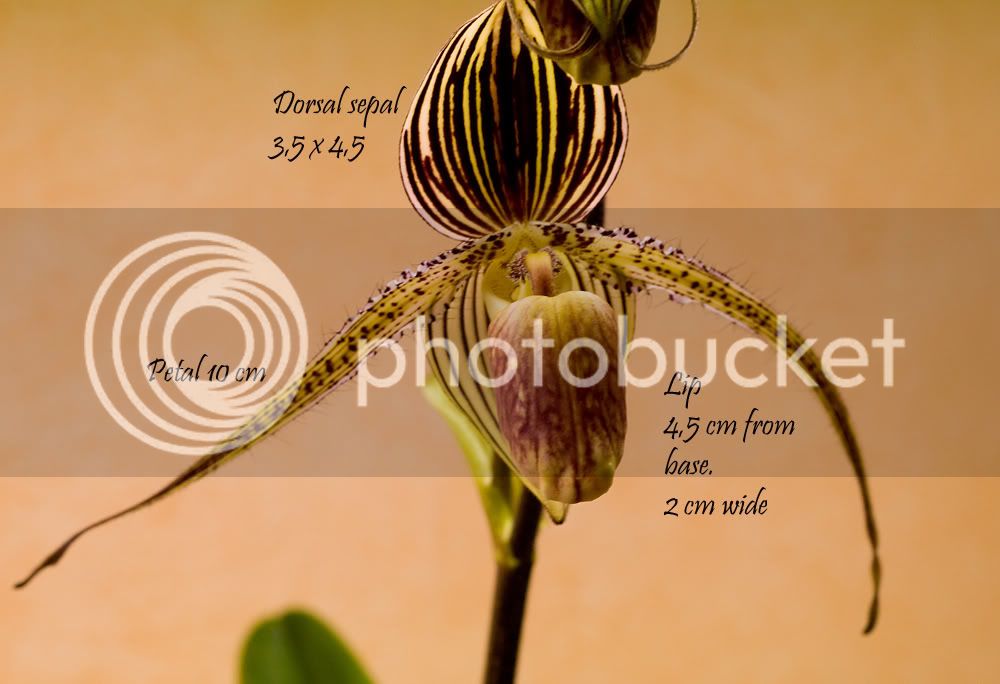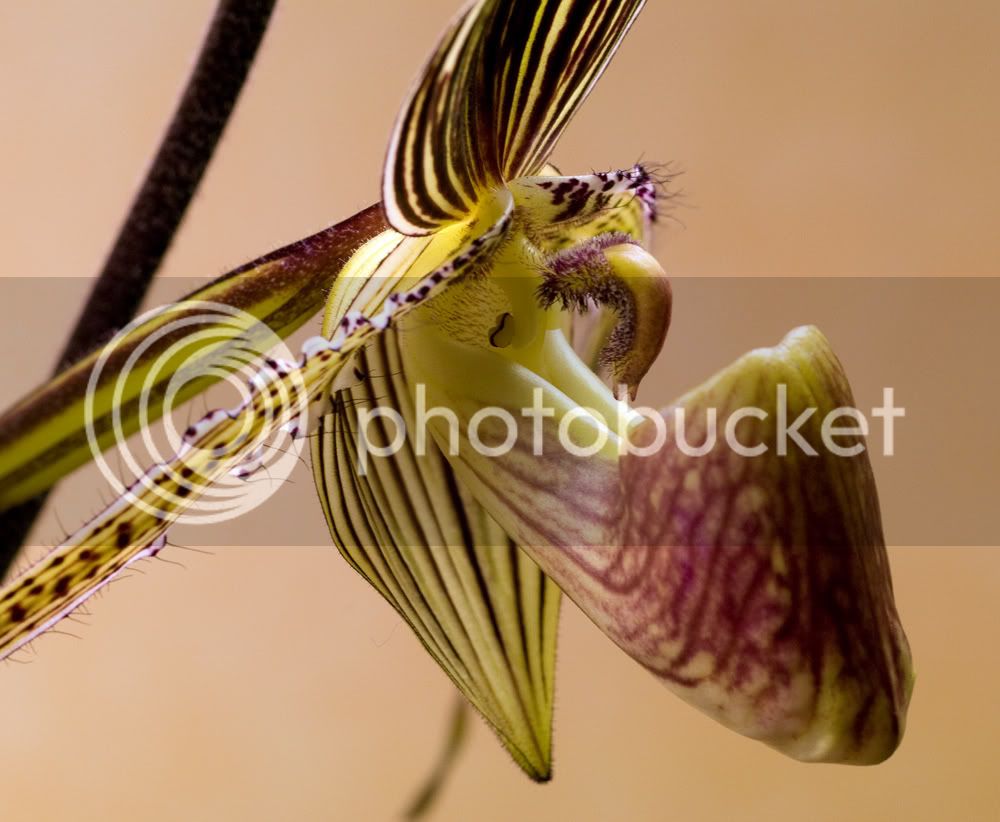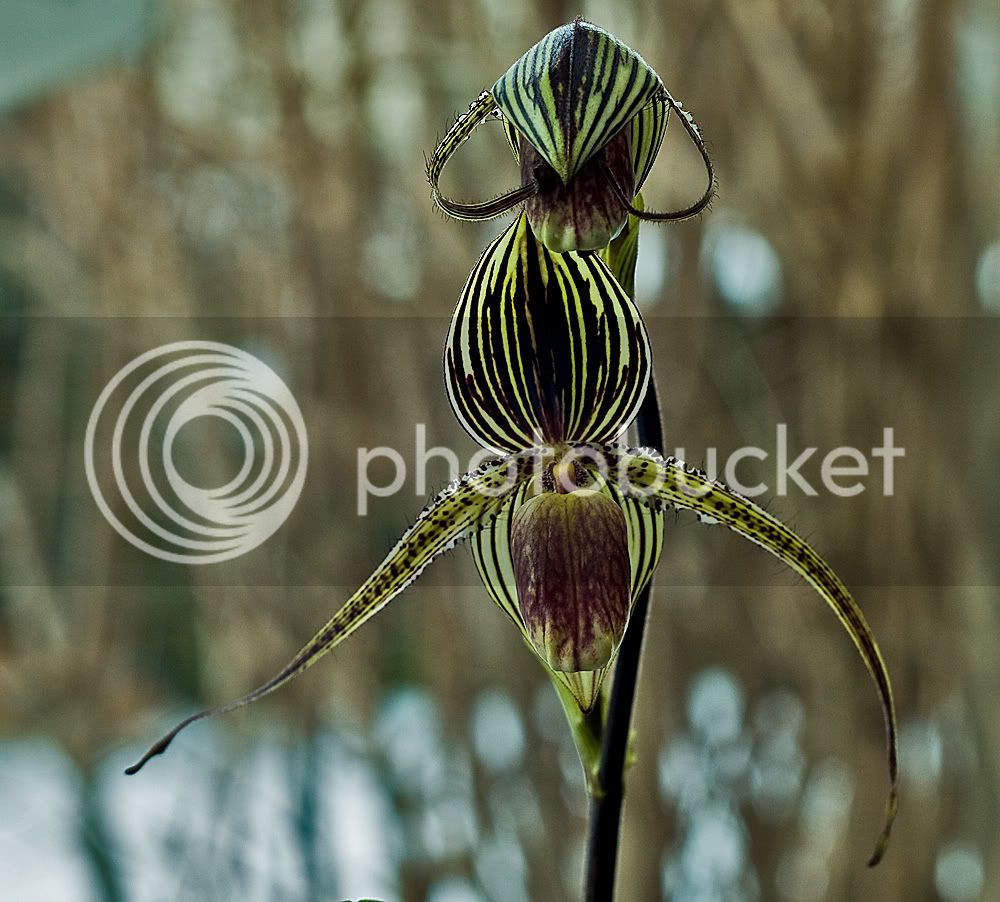B
Berrak
Guest
Two snapshots taken tonight. Flower is defenitely smaller than rotshildianum
and the stamnoide is different. Dorsal in cm.


and the stamnoide is different. Dorsal in cm.






It sure looks like a roth to me. 95% convinced. Any word back from the seller Berrak?....
"By the way - the original flask came from Australia." That explain it!oke:
It's just the tip of the staminode that differs slightly from P. rothschildianum. I would say it's within the range of variation.1. Soo strange that the flower are smaller than rotschildianum and that the stamnoide look different - check a close-up picture in Cribb, The Genous Paphiopedilum ...
That's no significant property to tell a hybrid from a pure roth.2. Soo strange that it will flower and growing better when kept at temperatures above 20 deg.
There is a wide variation within the colouration of roth's blooms. This isn't a significant feature too3. Rotschildianum does not have the yellow tone as my hybrid.
I'm pretty sure and convinced this isn't this hybrid.4. The seller says its Edna Ratcliff
David,....I'm not an expert in terms of genetics so I'm happy for you to pull apart anything I say. I'm just repeating what others have told me and what I have read from various sources....
I'm complete aware of Mendel's laws and I agree to your example regarding Michal Koopowitz.If you cross phillipinense x sanderianum you get the primary hybrid Michael Koopowitz, which is pretty constant in its form. If you cross Michael Koopowitz with Michael Koopowitz you get a secondary hybrid with the same genetic makeup - ie 50% sanderianum and 50% phillipinense). However as it is a secondary hybrid you get throwbacks to the grand parents. So some seedlings will look look like phillipinense, some like sanderianum and a whole lot will look like something in between. There will be huge phenotypic variation not seen in the primary cross. I dare say you would be convinced that some of them could not be Michael Koopowitz but one of the species....
I'm not conviced by this breeders intentions and aims. Such plant contribute to a lot of confusion and misunderstanding....I was in a local Paph breeders glasshouse a few years back and he showed me a cross he was making between 2 of his St Swithins. Confused I asked why he would bother making such a cross. He told me because it is a secondary hybrid a few will look predominantly like a roth but would hopefully show the vigour of a St Swithin.
That's not my opinion - see above....To me this is just the same with the hybrid we are talking about here....
Maybe you are right maybe not. In the end you can't find it out just with discussions about the status of this plant. There are possibilities to clear it e.g. cross it with itself and wait for the flowers of it's progenies (takes too long) or to make an DNA analysis (too expensive).To me the photo that is shown here is totally plausible for this cross. In anycase while I agree it looks to be very roth dominated, there is something about it that doesn't look quite right for the full species.....
I agree that's what i wrote too.Unfortunately, the Michael Koopowitz analogy does not apply in this case. Michael Koopowitz is a primary hybrid between two valid species. This cross is between a primary hybrid and another species. It is not a selfing (if it was, then the tag should read "[St. Swithin x praestans] x self". Genetically, this plant is 1/4 roth, 1/4 philippinense and 1/2 praestans. There should be A LOT more praestans showing in this flower.....most notably, downward pointing, twisted petals and a larger, wider staminode shield. The yellow-ish background colour is to be expected from a praestans cross; but, there are plenty of pure roths that have a yellow-ish background, as well as plenty with a white background.
Perhaps this could be the solution and a result I could live with.Now that there are more photos to see, I agree that the staminode is a bit off. It's not the exact shape of a pure roth. Plus, the striping in the dorsal sepal looks suspiciously like it has wilhelminiae influence. Of course, wilhelminiae used to be considered a variety of glanduliferum...along with praestans. So, it could be that this plant is a hybrid of St. Swithin and wilhelminiae....or even St. Swithin and William Ambler. William Ambler is roth x wilhelminiae. If this were the case, I'd expect to see a VERY, VERY roth-like flower with just a hint of the other two species....and basically, with this flower, that's what we're seeing. It looks like a roth at first glance; but, there is the issue of the staminode being a bit off and the dorsal sepal having very wilhelminiae-looking influence. In the end, it's unlikely to ever know for sure what it is. It's always easier to say what something IS NOT, rather than what IT IS. IMHO, this IS NOT St. Swithin x praestans. There is too much roth influence and not enough praestans influence. If I had to guess (and please note, this is just an educated guess), I'd say that this is St. Swithin x William Ambler.
Enter your email address to join: